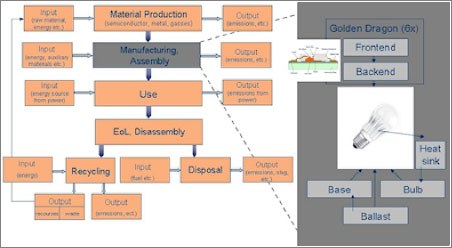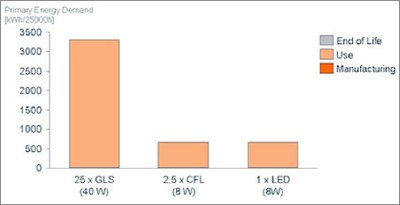OSRAM Study: LED Life-Cycle Assessment
An OSRAM Opto Semiconductors` study on the life-cycle assessment (LCA) of LED lamps shows the latest generation of lamps achieves a very high score for environmental friendliness.
This study involved a close look at their entire life-cycle – how much energy and raw materials the lamp consumes in terms of production, use and disposal and the environmental impact involved in the process. The result was clear: today’s LED lamps achieve the LCA values of compact fluorescent lights and are far superior to conventional incandescent lamps.
In order to evaluate lamps and how they actually deal with energy and resources, it is not enough just to consider energy consumption while they are in use. The aim of OSRAM Opto Semiconductors’ LCA is therefore to analyse the environmental impact of an LED lamp over its entire life and to compare it with a compact fluorescent lamp and an incandescent lamp, all of them are commercially available.
The relevant material and energy supplies were determined in detail for all the LED lamp’s components and production processes. Apart from a detailed analysis of each individual production stage, for LED chips and lamp housings, for example, these also include all necessary transports such as the transport of an LED lamp from its production site in China to its place of installation in Europe.
About Osram Opto Semiconductors:
OSRAM is part of the Industry sector of Siemens and one of the two leading lighting manufacturers in the world. Its subsidiary, OSRAM Opto Semiconductors GmbH in Regensburg (Germany), offers its customers solutions based on semiconductor technology for lighting, sensor and visualization applications. OSRAM Opto Semiconductors has production sites in Regensburg (Germany) and Penang (Malaysia). Its headquarters for North America is in Sunnyvale, CA (USA), and for Asia in Hong Kong. OSRAM Opto Semiconductors also has sales offices throughout the world. In the 2008 fiscal year (to the end of September) OSRAM Opto Semiconductors employed more than 4600 people and achieved sales totaling 529 million euros. For more information go to www.osram-os.com.



